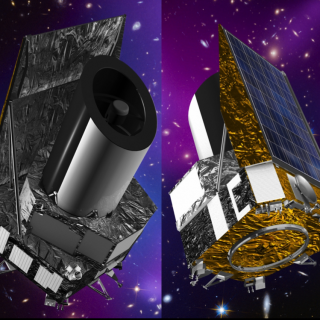In force date
Call year
2017
Investigator
Carlos Manuel
Gutiérrez de La Cruz
Financial institution
Amount granted to the IAC Consortium
189.970,00 €
Description
| The activity of the IAC in the NISP instrument will be focused on tasks related to testing the different models of the DAS (Driving and Acquisition Submodule) module. In particular, in the EM / EQM / FM models the IAC: a) has participated ellaborating the test plan and monitoring of activities, b) is taking part in the analysis of these results contrasting them with the verification matrix, c) when neccesary, it has participated in the integration tests with other subsystems and will continue supporting that in the future, and d) it is supporting the definition of equipment and configuration for the integration tests on a subsystem level and it will participate in such tests. The scientific participation is based on the experience of the research team in areas such as properties of cosmic microwave radiation, characterization of the processes of the interstellar medium, detection and characterization of galaxy clusters, and stellar formation processes in galaxies at high redshift. For all of these the surveys that are planned with Euclid will allow very significant advances and synergies with other databases. It is remarkable as well the team's experience in the development of tools for the analysis of arge databases and in the use of large astronomical facilities with different observational techniques in a wide part of the electromagnetic spectrum. The application to Euclid data usually requires modification of existing algorithms, their validation with simulated data and the preparation of observational programmes before the launch of the mission. Some representative scientific cases are: 1. The use of the gravitational lensing effect to detect galaxies at high redshift, and in particular those that are experiencing large star formation bursts. With respect to the current available data, Euclid represents a very significant advance in terms of sensitivity and sky coverage, thereby the new data will increase significatively the number of known objects and it will be possible to extend the work to larger redshifts. 2. The inclusion of Euclid in the correlations between large databases will allow important improvements in the determination of cosmological parameters and in the characterization of astrophysical objects. 3. The calibration of photometric redshifts: this is a program that Is recognized by the consortium as a key factor to achieve a correct interpretation and exploitation of Euclid data. The IAC participation focuses on an observation program with GTC / OSIRIS already under way and represents approximately one-third of the total effort and a first-rate contribution to the success of the mission. |
Related projects

NISP (EUCLID)
The Near Infrared Spectrometer and Photometer (NISP) is an infrared spectrograph for the EUCLID mission. The aim of EUCLID is to obtain a map of the Dark matter of the Universe. NISP will provide near infrared photometry, low resolution spectra and redshifts of millions galaxies. IAC participates in the development of NISP Instrument Control Unit.
Rafael
Rebolo López


